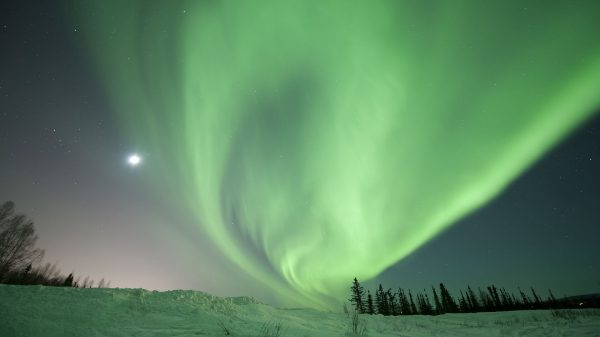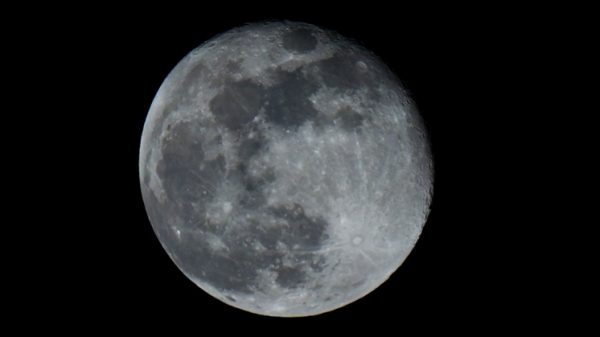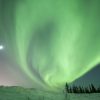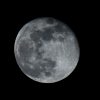A distant planet may even have an atmosphere similar to Earth
NASA's James Webb Space Telescope has discovered a «Super-Earth» planet located 48 light-years away that may contain suitable living conditions. Scientists have discovered an exoplanet that may contain liquid water. Dubbed LHS 1140, this distant planet may even have an atmosphere similar to Earth's.

Ever since humans first turned their gaze to the stars, we have been fascinated by the search for life beyond Earth, writes the Daily Mail. But that search may soon be over, as scientists have discovered a planet that could be our «best bet» to find alien life in space.
An international team of scientists used observations from NASA's James Webb Space Telescope (JWST) to analyze the atmosphere of an exoplanet called LHS 1140 b.
Their observations confirmed that the nearby planet could have an ocean of liquid water and even a nitrogen-rich atmosphere — for sure the same as on Earth.
Lead study author Charles Cadieux of the University of Montreal says: «Of all the currently known temperate exoplanets, LHS 1140 b may well be our best bet for one day indirectly confirming the presence of liquid water on the surface of an alien world outside our solar system.»
Although we don't know exactly what alien life would look like, scientists are almost certain that it would need liquid water to survive, notes the Daily Mail.
The exoplanet LHS 1140 b is located 48 light years from Earth in the constellation Cetus. This makes it the closest planet to us in the «Goldilocks zone» its star — the region in which water can exist in liquid form.
This exoplanet is about six times Earth's mass and orbits a small red dwarf star about one-fifth the size of our Sun at a distance cold enough to potentially form water.
Recent analysis found that the exoplanet was significantly smaller more massive than an object of that size should be.
That left the researchers with two options: either LHS 1140 b was a «mini-Neptune» made mostly of swirling gas, or it was a «mega-Earth» covered in liquid or frozen water.
To determine which was the case, the researchers combined data from JWST and other space telescopes like Hubble and Spitzer to conduct the first «spectroscopic» analysis of LHS 1140 b.
Because certain molecules block different wavelengths of light, measuring the frequencies of light passing by the planet can tell us what chemicals might be present.
Their analysis suggests that LHS 1140 b is most likely a «water world» or "snowball" with a rocky core, rather than a gas-filled mini-Neptune.
What's even more exciting is that initial analysis suggests the exoplanet may even have a dense atmosphere, just like the one here on Earth, the Daily Mail further writes. This would give it a much greater ability to retain heat from its star and increase the likelihood that it could have a stable climate — all important factors for the existence of life.
Dr. Ryan McDonald, an astronomer at the University of Michigan who worked on the paper, said: «This is the first time we have seen a hint of an atmosphere on a habitable exoplanet rich in rocky or icy zones.»
p>
Although scientists warn that more observations with the James Webb Telescope are needed, the atmosphere may be rich in nitrogen, which makes up 78% of Earth's atmosphere.
Dr. McDonald adds: «LHS 1140 b is one of the best small exoplanets in the habitable zone to support a dense atmosphere, and we may have just discovered evidence of air on this planet.»
Similar to the Moon's orbit around Earth, LHS 1140 b has a synchronous orbit, meaning one side is constantly facing away from its star.
While researchers believe the exoplanet is likely a frozen snowball, this means there could be liquid water on the side warmed by the star.
If LHS 1140 b does have an atmosphere, then she probably has a “bull’s-eye ocean” with a diameter of approximately 2,400 miles (4,000 km), equivalent to half the surface area of the Atlantic Ocean.
In addition, the surface temperature of this ocean can reach a pleasant 20°C (68°F), which is the highest sea temperature in the UK in the summer.
Although it is not the first planet to be discovered within the habitable zone of its star, it provides scientists with one of the best opportunities for further study, notes the Daily Mail.
Compared with stars around which the exoplanets in the TRAPPIST-1 system orbit, the star around which this exoplanet orbits is relatively quiet. This makes it easier to separate effects caused by its atmosphere from random noise from sunspots and solar flares. Researchers say this provides a unique opportunity to study a planet that could potentially support life.


























































Свежие комментарии